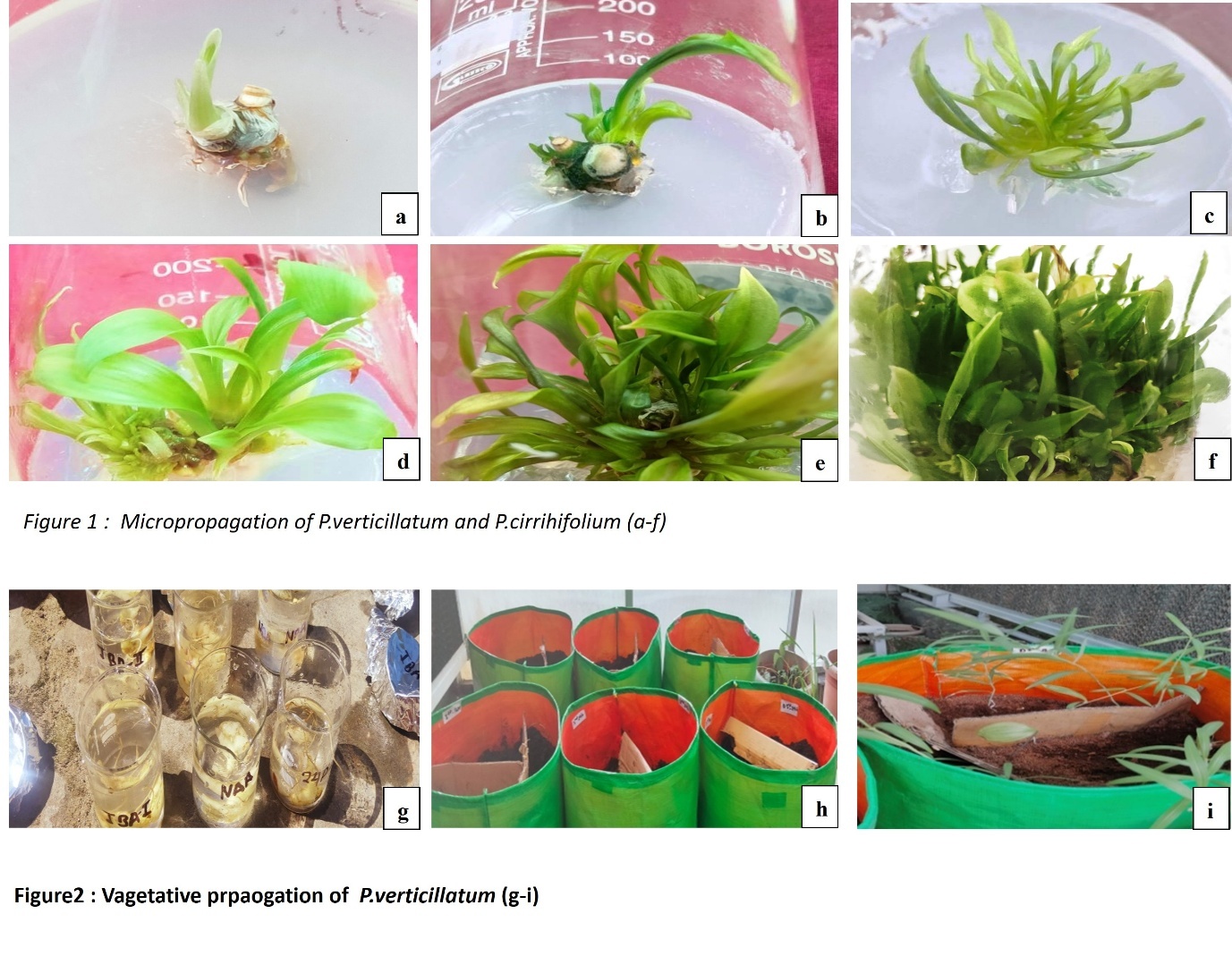Developing conservation strategies for harnessing pharmaceutical potential of Astavarga plants of West Himalaya
Objectives
• To develop propagation methods for targeted species.
• To develop agro technologies and initiate a PPP model for targeted species.
• To optimize the extraction procedures of bioactive compounds.
• To raise awareness and impart training on the conservation and sustainable utilization of targeted species.
Achievements
1. A germplasm repository of Polygonatum verticillatum and P. cirrhifolium has been established at the Surya-Kunj ex-situ conservation site of the institute, where plantlets from different populations are being conserved.
2. In vitro propagation protocols for both species have been successfully developed using different explants such as rhizomes, leaves, and nodes, ensuring sustainable propagation and long-term preservation.
3. Vegetative propagation through rhizome segments under mist chamber conditions was standardized, resulting in a high sprouting percentage under synergistic treatment of auxins.
4. Phytochemical screening of different plant parts (leaf, rhizome) of both the species has been conducted using standard methodologies.
5. To promote community participation and conservation awareness, several programs were organized in Katarmal (Almora), Keemu, and Malkha Dugraja villages of Bageshwar. These initiatives sensitized local communities to the importance of these medicinally valuable species and the need for their protection and sustainable utilization.


